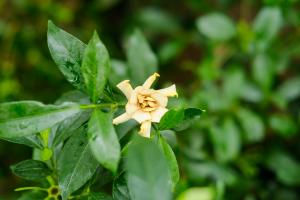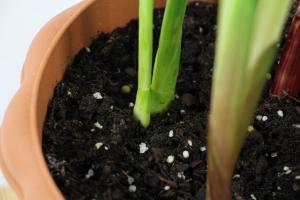Is it Good to Leave Straw Around Tomato Plants?
Tomatoes are one of the most popular vegetables (or fruits if we are being botanical) in home gardens. They are easy to grow, delicious, and packed with nutrients. When it comes to taking care of tomato plants, many gardeners wonder whether or not it is beneficial to leave straw around their plants. In this article, we will explore the advantages and disadvantages of using straw as a mulch for tomato plants.
The Benefits of Using Straw as a Mulch for Tomato Plants
Straw is a popular choice for gardeners as it offers many benefits for the plants. First and foremost, it provides insulation to the soil, protecting the roots from extreme temperature changes. Straw also helps prevent moisture loss from the soil, maintaining a consistent level of moisture which is crucial for tomatoes to grow healthy and strong. Additionally, straw helps suppress weed growth, meaning less time spent weeding and more time enjoying your garden.
The Drawbacks of Using Straw Mulch for Tomato Plants
While straw offers many benefits, there are also some drawbacks to consider. The biggest concern for using straw is that it can attract slugs and snails, which can damage your plants. This is because slugs and snails like to hide under moist conditions, which are created by the straw. Also, if you use straw with weed seeds, you risk introducing weeds to your garden that will compete with your tomatoes for water and nutrients.
Tips for Using Straw Mulch with Tomato Plants
If you decide to use straw as a mulch for your tomato plants, here are some tips to help you get the most benefits while reducing the risks:
Make sure the straw is dry before applying to your garden. Wet straw can create an anaerobic condition that promotes fungal growth, which can harm your plants.
Avoid using straw that is too thick, as it can prevent water from reaching the soil and block oxygen from entering the roots. A layer of 2-3 inches is enough.
Regularly check for slug and snail activity. Remove any hiding places, such as the straw, and apply organic slug repellents if needed.
Use straw that is weed-free or sterilized to avoid introducing weeds to your garden.
Conclusion
Using straw as a mulch for your tomato plants has many benefits but it also has some potential drawbacks. By following the tips above and regularly monitoring your plants, you can use straw as a mulch effectively and safely. Many gardeners swear by straw as a great way to maintain soil moisture and control weed growth, so it's definitely worth considering if you want to get the most out of your tomato crop.

 how many times do yo...
how many times do yo... how many planted tre...
how many planted tre... how many pine trees ...
how many pine trees ... how many pecan trees...
how many pecan trees... how many plants comp...
how many plants comp... how many plants can ...
how many plants can ... how many plants and ...
how many plants and ... how many pepper plan...
how many pepper plan...
































